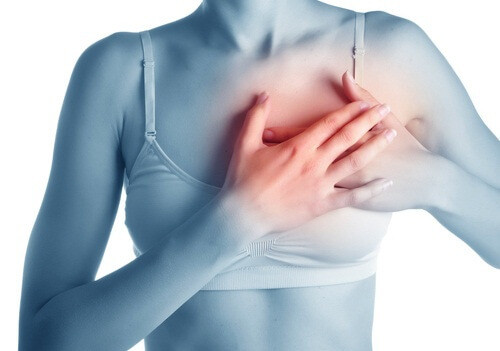6 Popular Sports that Help Your Cardiac Health

Exercise is fundamental for having a strong and healthy heart. Would you like to know some of the best sports to improve your cardiac health, reduce obesity, and improve your respiratory system? We’ll tell you in this article!
Sports and cardiac health
It’s nothing new that sports are good for our health. If you exercise with moderate intensity, then, in the long run, it will change your life and outlook. It can also help to reduce the probability of many ailments and diseases.
Sports can help reduce the risk of heart attacks and hypertension. Nevertheless, there are some sports that are more effective than other for certain illnesses or health conditions. Sports that reduce your risk of suffering from heart or vascular disease are sports that are based on aerobic exercises.
These exercises have more positive effects on general health and are associated with better heart function and metabolism.
In addition, these activities tend to take place during free time and are not competitive sports. Besides improving muscle condition, they are also beneficial socially and emotionally.
The sports that can help your cardiac health

The exercises below not only benefit your cardiac health, but they also stimulate your respiratory system and also your muscular strength. Together, all of the advantages that they offer reduce the risk of cardiac disease.
So what are they?
Tennis
With tennis we can include any sports that use a racket. These include paddle ball, squash, badminton, and ping-pong. These sports are associated with a lower risk of cardiovascular diseases since they reduce arterial tension and improve heart function.
Racket sports combine the components of great intensity with taking rests in between points or serves. The energy spent in these sports allows you to improve muscular function and control weight. Experts recommend them to fight obesity and diabetes.
See also: How to Counteract Obesity
Hiking

This is a moderate-intensity exercise. Besides helping to prevent heart attacks, it can also help people who have already had one. Hiking improves the response of the heart by strengthening the chambers and by increasing intake of blood with each beat.
While we walk, the movement of oxygen and other nutritive substances is increased. It improves the health of our blood vessels, facilitates the return of blood to the heart or the lungs, and encourages deep breathing.
To take advantage of these benefits, the walk should take place in rural surroundings. The time of year and characteristics of the terrain are not important.
Swimming
Without a doubt, this is one of the most complete sports that exist and it helps enormously in the area of cardiac health. When swimming, we exercise many of our muscles and develop intramuscular coordination.
This benefits the heart as well as controlling blood pressure. As if this weren’t enough, swimming provides energy, improves our levels of cholesterol and helps us lose weight.
Among the advantages of this sport are that joints are not affected, so it’s good for all ages. Swimming is recommended for those 40 years and up to help to prevent heart attacks.
Skiing

Some may think this mountain sport is very dangerous and is only for the young and athletic. But what about cross-country skiing? Sliding through the snow using skis and poles could be just what we need to have a strong and healthy heart.
Cross-country skiing offers several benefits for the cardiovascular system. This is because it requires considerable aerobic energy. The size of the heart, the heart beat, arterial tension, the blood flow and volume all notably improve as a result of skiing.
Aerobic Exercise
All exercise that is considered aerobic is “heart healthy” and helps neuro-muscular coordination. Aerobic or any type of dance keeps people at a healthy weight. You can burn 260 calories in a half hour of moderate activity.
At the same time, this kind of activity has a fun side to it. Because of this, it is capable of removing the harmful effects of stress. It’s not necessary to attend a class in a dance school. You can simply dance to your favorite songs in your own home!
Did you know: The 7 foods that contain negative calories
Biking
Biking is an exercise for anyone who would like help in preventing a heart attack, or someone who has already had one. When carried out with regularity and intensity, it allows healthy movement of the legs, hips and glutes.
As well as helping to prevent heart attacks, it can regulate blood pressure and lower cholesterol.
Other benefits of biking are that it can:
- Heighten the effectiveness of insulin
- Stimulate the production of chemicals in charge of mood and stress
- Be of some help in preventing the occurrence of osteoarthritis and herniated discs
So what are you waiting for? Get out there and exercise!
All cited sources were thoroughly reviewed by our team to ensure their quality, reliability, currency, and validity. The bibliography of this article was considered reliable and of academic or scientific accuracy.
-
Brennan, A. M., & Ross, R. (2017). Physical activity and cardiometabolic health. In Nutrition and Cardiometabolic Health. https://doi.org/10.1201/9781315119410
-
Lavie, C. J., Milani, R. V, Marks, P., & de Gruiter, H. (2001). Exercise and the heart: risks, benefits, and recommendations for providing exercise prescriptions. The Ochsner Journal. https://doi.org/PMC3116747
-
Grøntved, A., Koivula, R. W., Johansson, I., Wennberg, P., Østergaard, L., Hallmans, G., … Franks, P. W. (2016). Bicycling to work and primordial prevention of cardiovascular risk: A cohort study among Swedish men and women. Journal of the American Heart Association. https://doi.org/10.1161/JAHA.116.004413
-
Zhao, D., Sun, Y., Tan, Y., Zhang, Z., Hou, Z., Gao, C., … Gao, F. (2018). Short-Duration Swimming Exercise after Myocardial Infarction Attenuates Cardiac Dysfunction and Regulates Mitochondrial Quality Control in Aged Mice. Oxidative Medicine and Cellular Longevity. https://doi.org/10.1155/2018/4079041
This text is provided for informational purposes only and does not replace consultation with a professional. If in doubt, consult your specialist.








